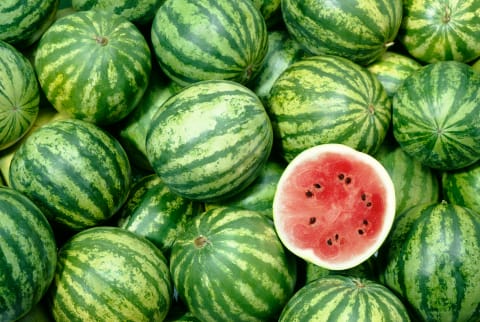Yes, You Can Absolutely Eat Watermelon Rinds—Here's How (And The Benefits)
Stop tossing this nutrient-rich part of the fruit.

Advertisement
This ad is displayed using third party content and we do not control its accessibility features.
Image by RedHelga / iStock July 03, 2024 We carefully vet all products and services featured on mindbodygreen using our Our selections are never influenced by the commissions earned from our links. With about 92% water per serving size1, watermelon is arguably one of the most refreshing and hydrating summer fruits. Most people gravitate toward the juicy center and toss the watermelon rind, assuming the tough exterior isn't edible. But it turns out, the watermelon rind actually has a range of health benefits and plenty of tasty uses. To cut down on waste and get all of the watermelon's benefits, mbg spoke with registered dietitians for their take.
Can you eat watermelon rind?
"Believe it or not, you actually can (and should) eat watermelon rind," registered dietitian Brenna Wallace, M.S., RDN, LDN, tells mbg.
In fact, watermelon rinds have been used since ancient Egyptian times, registered dietitian Ella Davar, R.D., CDN, tells mbg. With a rising awareness of environmental sustainability and zero-waste movements, though, she says eating the rind is becoming more mainstream.
"More and more ideas are popping out about usage of carrot tops, beet leaves, papaya seeds, and watermelon rinds," Davar says.
One thing to keep in mind before eating them, though, is the quality of the produce. Davar recommends looking for organically grown fruits that haven't been treated with herbicides or pesticides.
Watermelon rind benefits
As long as the fruit meets quality standards, Wallace says the white and green pieces of watermelon are actually rich in nutrients like magnesium and potassium and have a number of benefits:
They're a good source of fiber.
Since the rinds are lower in sugar and higher in fiber than the actual melon, when eaten together, they help slow down sugar absorption in the gut, Davar explains. This is what helps prevent blood sugar spikes.
"Americans only eat around 10 to 15 grams of fiber per day, much lower than the recommended 25 to 39 grams per day," Wallace says. "However, adding watermelon rind to your diet can boost your daily fiber intake."
They contain beneficial amino acids.
The kidneys convert this nonessential amino acid into another amino acid, called L-arginine, Davar explains, as well as a chemical called nitric oxide. "Nitric oxide helps to dilate the veins and arteries, allowing for better blood flow to both your heart and your muscles," Wallace says.
Ways to use watermelon rind
"Much like cucumber, pickling watermelon rind is a popular way to reap its many benefits," Wallace tells mbg. For those who don't like the acidic or sour taste of pickles, she recommends blending the rind into a smoothie or adding it to a juice.
To make a refreshing rind drink, Davar says to blend strawberries, ice, and lemon juice with one to two watermelon slices (with the rinds, of course). Adding honey and ginger are optional, she says.
Shredding them into summer salads and salsas or adding them to grilled kabobs are other creative ways to make use of watermelon rinds. However you choose to enjoy them, it's clear that watermelons are healthy and versatile summer snacks.

 MikeTyes
MikeTyes 
































